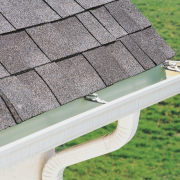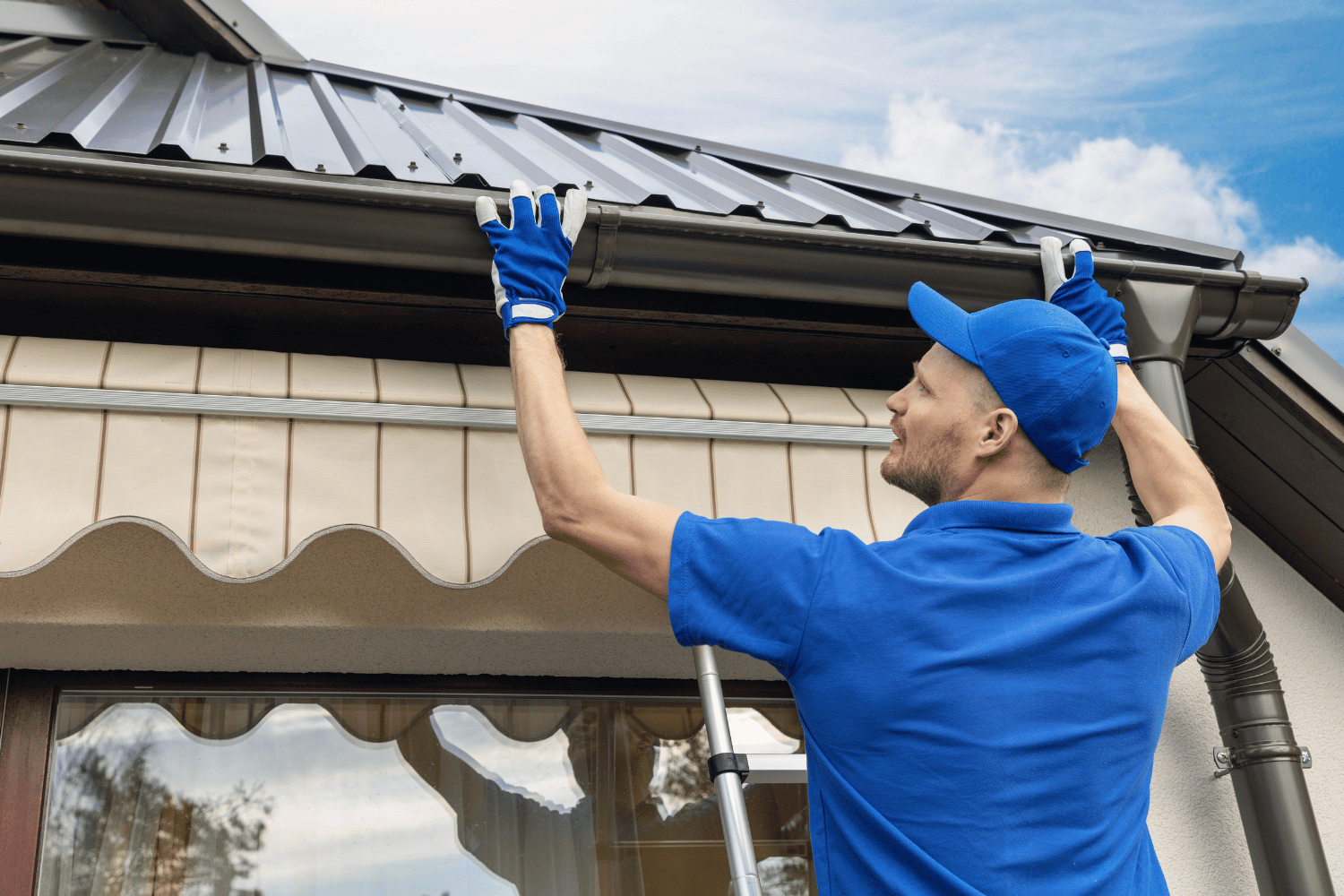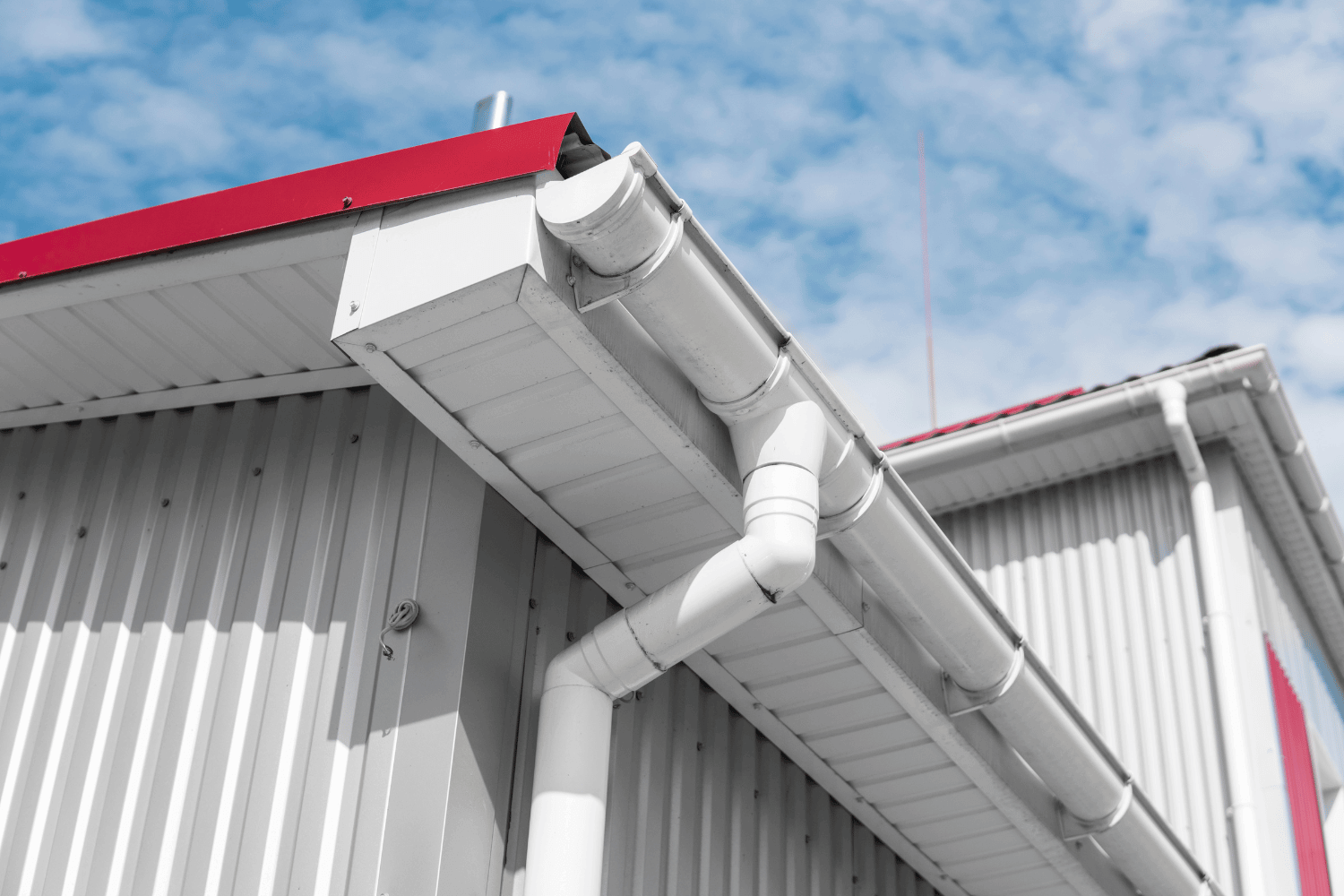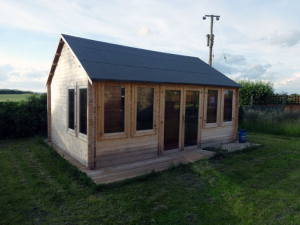What Are Rain Gutters For? Essential Home Maintenance Explained
Rain gutters protect your home by collecting rainwater and diverting it away from the roof and foundation. This prevents basement flooding, soil erosion, and structural damage. In this article, you’ll learn more about what are rain gutters for, and how they maintain your home.
Key Takeaways
-
Rain gutters are essential for managing rainwater, protecting homes from structural damage, basement flooding, and mold growth by directing water away from foundations.
-
Regular maintenance of gutters and downspouts is crucial to prevent clogs, leaks, and associated costly repairs, ensuring the longevity and efficiency of the gutter system.
-
Gutter guards can reduce cleaning frequency and extend the lifespan of gutters by preventing debris accumulation, which is particularly beneficial in environments prone to ice dams and heavy rainfall.
Understanding Rain Gutters

Rain gutters, more than just metal or plastic channels along your roof’s edge, are crucial for your home. They collect and channel rainwater from the roof to the ground. This simple mechanism prevents water from pooling around your foundation, avoiding serious structural issues.
The primary purpose of rain gutters is to gutters divert water away from your house. This helps prevent a myriad of problems such as basement flooding, soil erosion, and water damage to the walls and foundation. Moreover, well-maintained gutters prevent water splashes that carry dirt onto your siding, keeping your home looking clean and well-kept.
Styles of gutters include hidden ones integrated into the roof structure, offering a sleek, less visible way to manage rainwater. No matter the style, maintaining gutters is crucial. Regular cleaning and inspections ensure efficiency and protect your home from water damage.
Importance of Rain Gutters for Home Protection

Rain gutters are essential for managing water flow from your roof during storms. Without them, rainwater can accumulate on your roof, leading to potential rot and deterioration of roofing materials. This could result in expensive repairs or even a complete roof replacement.
Gutters prevent basement leaks and foundation settlement by directing water away, thus protecting the foundation from water exposure. This maintains structural integrity and prevents mold development in moist environments. Improper drainage due to a lack of gutters can lead to soil erosion around your home, damaging your landscape and further compromising your foundation.
Gutters also help avoid significant repair costs by preventing rainwater overflow onto siding or foundation issues. The potential costs for water damage restoration can range from $1,200 to $5,300, a significant financial burden that most homeowners would prefer to avoid. Preventing stagnant water, gutters contribute to pest control, making them indispensable for home maintenance.
How Rain Gutters Protect Your Foundation
One of the most critical functions of rain gutters is to protect your home’s foundation. By diverting rainwater away from the base of your home, gutters prevent water from collecting around the foundation. This is crucial because water that pools near the foundation can weaken the structural support of your home.
Without gutters, rainwater can saturate the ground around your foundation, causing instability and damage. This can lead to foundation cracks and water intrusion, causing severe structural issues and costly repairs. Properly functioning gutters and downspouts maintain your home’s structural integrity and minimize maintenance costs.
Effective gutter maintenance prevents basement flooding from water pooling near the foundation. By directing rainwater away, gutters maintain a dry, stable foundation, protecting your home from water damage and costly repairs.
Preventing Roof and Fascia Damage

Rain gutters collect and channel water from your roof, preventing potential leaks in your attic and upper rooms. Properly functioning gutters prevent rainwater accumulation on your roof, avoiding leaks and damage to roofing materials.
By diverting water from the roofline, gutters preserve the aesthetic and structural integrity of your home. Clogged gutters can overflow and damage the fascia boards. Regular maintenance, including cleaning, reduces the risk of fascia damage and costly repairs.
Gutter downspouts reduce the risk of water damage to roofs, siding, and windows by efficiently redirecting water. In colder climates, gutter guards prevent ice dams by ensuring free water flow. Regular maintenance further minimizes the risk of ice dams, preventing roof and structural damage.
The Role of Downspouts in a Gutter System
A gutter system includes gutters and downspouts, both essential for effective water management. Downspouts direct water away from your home, preventing damage to the foundation and other structural components. Without functioning downspouts, rainwater can cause issues like corrosion and mold growth.
Magnum 4”x3” downspouts, for example, can divert twice as much water compared to traditional downspouts, making them an excellent choice for homes in areas with heavy rainfall. By efficiently channeling rainwater away, downspouts maintain the structural integrity and longevity of your property.
Benefits of Installing Gutter Guards

Gutter guards can significantly reduce the frequency of gutter cleaning, allowing maintenance once a year or less. This saves time and ensures gutters remain clear and functional.
Gutter guards enhance efficiency, reliability, and longevity by blocking debris and minimizing clogs. This prevents water overflow and damage to the fascia and foundation. Quality gutter guards extend the service life of gutters by preventing corrosion and damage from debris accumulation, making them a worthwhile investment. If you want to protect your home, consider how to install gutter guards effectively.
Gutter guards also protect against ice dams in colder climates by ensuring free water flow. This is crucial for homes in harsh winter areas, as ice dams can cause significant roof and structural damage.
Types of Gutters: Materials and Styles

Several materials and styles are available when choosing gutters. Aluminum gutters are the most common, known for their durability and decades-long lifespan. They offer a cost-effective option for homeowners seeking reliable gutter installation.
Copper gutters are a premium choice, known for their longevity of over 50 years. Though more expensive to have gutters installed, their aesthetic appeal and durability make them a worthwhile investment for long-lasting solutions.
Vinyl gutters, suitable for dry climates, have a lifespan of up to 20 years but are prone to UV damage. Seamless gutters, constructed without seams, are less likely to leak compared to traditional sections. This style is popular for its sleek appearance and reduced maintenance needs.
When selecting gutters, consider the climate, budget, and aesthetic preferences to ensure the best fit for your home.
Regular Maintenance for Functioning Properly
Regular maintenance ensures gutters function properly and protect your home from water damage. Keeping gutters clean avoids common problems like clogs and overflows. Cleaning and inspecting your gutters at least twice a year, in spring and fall, is recommended.
Effective maintenance prevents water damage and significantly extends the lifespan of gutters. Regular maintenance addresses common gutter concerns and ensures long-term functionality. Factors like extreme weather and installation quality can affect gutter longevity, making regular upkeep essential.
Investing time in maintenance helps homeowners avoid costly repairs and ensures gutters provide optimal protection. Well-maintained gutters are key to a strong, durable home, safeguarding against water damage and structural issues.
Alternatives to Traditional Gutters
While traditional gutters are common for managing rainwater, alternatives exist. Rain chains, for example, use linked cups or chains to channel water from roofs to gardens or collection areas. They add a decorative element while managing water flow.
However, alternatives like rain chains might not manage large volumes of water as effectively as traditional gutters. Drip edges, ground gutters, and other debris are other options but may not offer the same level of protection and efficiency.
When considering alternatives, weigh their effectiveness against your home’s specific needs and climate.
When Might You Not Need Gutters?
Some scenarios might not require gutters. Homes with steeply pitched roofs or in dry climates, for example, may not need them. Here, the natural roof slope allows rainwater to flow away without additional drainage systems.
Gutters might be unnecessary for homes on naturally sloped ground, where water drains away from the foundation. While not generally required by law, assess your home’s specific conditions to determine if gutters are necessary. Consulting a professional can help you make an informed decision.
Summary
Rain gutters are an indispensable part of home maintenance, providing essential protection against water damage, foundation issues, and costly repairs. By understanding the importance of gutters and ensuring they are properly maintained, homeowners can safeguard their homes from potential water-related problems.
At Waddle Exteriors, we have seen the benefits of well-maintained gutters firsthand. Whether you’re considering new gutters, installing gutter guards, or exploring alternatives, taking proactive steps to manage rainwater effectively is crucial. With the right knowledge and maintenance, your gutters can provide long-lasting protection for your home.
Frequently Asked Questions
What are the main functions of rain gutters?
Rain gutters channel rainwater away from the roof and foundation, preventing water pooling and protecting your home from potential water damage. This crucial function helps maintain the structural integrity of your property.
Why are gutters important for home protection?
Gutters are crucial for protecting your home by managing water flow from the roof, which prevents water damage and potential foundation issues. Properly functioning gutters can save you from costly repairs in the long run.
How do gutter guards benefit my gutter system?
Gutter guards significantly enhance your gutter system by reducing cleaning frequency, preventing clogs, and extending the lifespan of your gutters. This results in less maintenance and fewer repairs, ensuring efficient water flow.
What types of materials are available for gutters?
Gutters are commonly made from materials like aluminum, copper, and vinyl, each offering unique advantages in terms of durability and suitability for various climates. Choosing the right material is essential for ensuring effective drainage and longevity.
Are there alternatives to traditional gutters?
Yes, alternatives to traditional gutters include rain chains, drip edges, and ground gutters, though they may be less effective in handling large volumes of water. Consider your specific needs when choosing a solution.











